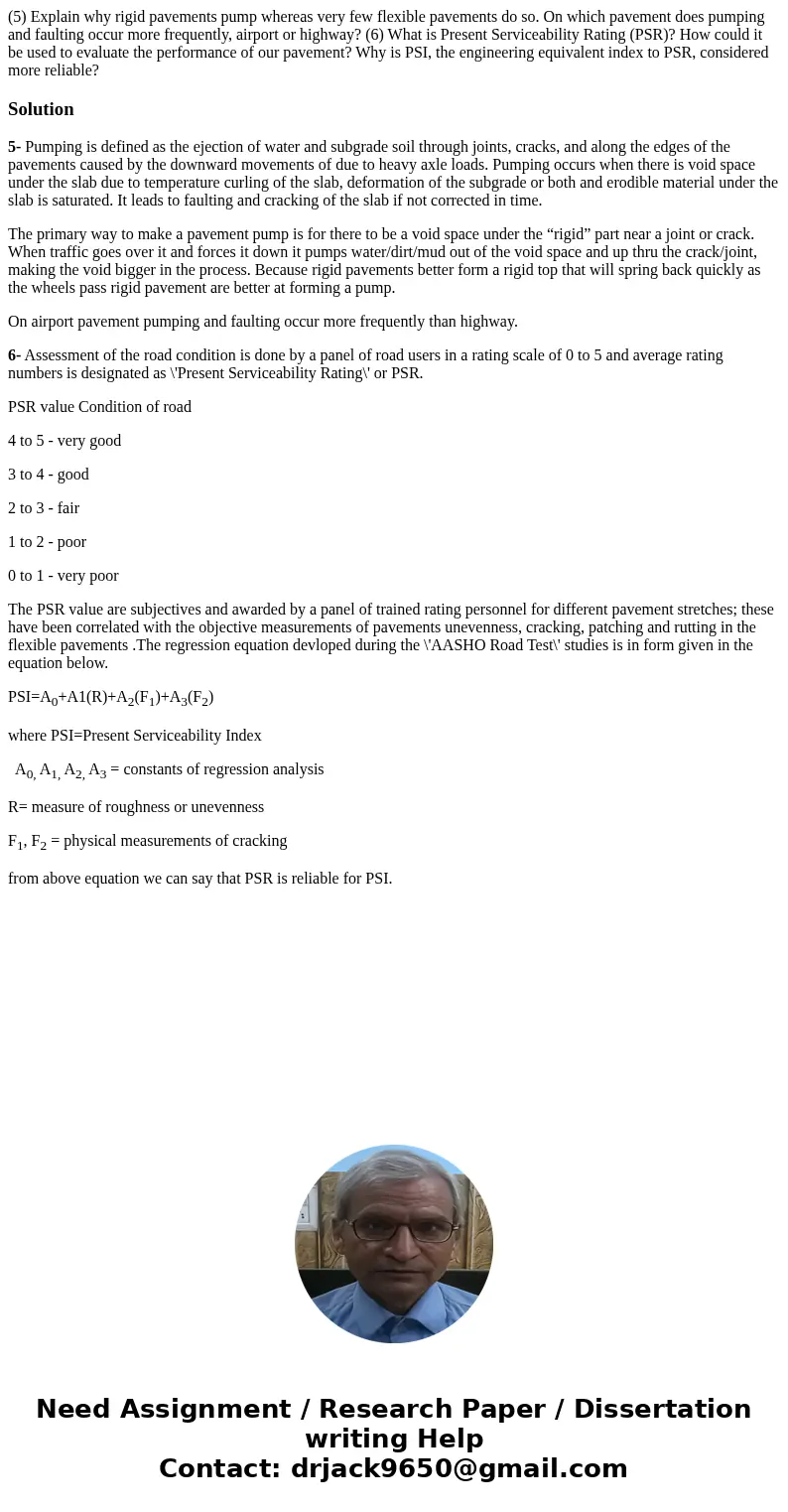5 Explain why rigid pavements pump whereas very few flexible
Solution
5- Pumping is defined as the ejection of water and subgrade soil through joints, cracks, and along the edges of the pavements caused by the downward movements of due to heavy axle loads. Pumping occurs when there is void space under the slab due to temperature curling of the slab, deformation of the subgrade or both and erodible material under the slab is saturated. It leads to faulting and cracking of the slab if not corrected in time.
The primary way to make a pavement pump is for there to be a void space under the “rigid” part near a joint or crack. When traffic goes over it and forces it down it pumps water/dirt/mud out of the void space and up thru the crack/joint, making the void bigger in the process. Because rigid pavements better form a rigid top that will spring back quickly as the wheels pass rigid pavement are better at forming a pump.
On airport pavement pumping and faulting occur more frequently than highway.
6- Assessment of the road condition is done by a panel of road users in a rating scale of 0 to 5 and average rating numbers is designated as \'Present Serviceability Rating\' or PSR.
PSR value Condition of road
4 to 5 - very good
3 to 4 - good
2 to 3 - fair
1 to 2 - poor
0 to 1 - very poor
The PSR value are subjectives and awarded by a panel of trained rating personnel for different pavement stretches; these have been correlated with the objective measurements of pavements unevenness, cracking, patching and rutting in the flexible pavements .The regression equation devloped during the \'AASHO Road Test\' studies is in form given in the equation below.
PSI=A0+A1(R)+A2(F1)+A3(F2)
where PSI=Present Serviceability Index
A0, A1, A2, A3 = constants of regression analysis
R= measure of roughness or unevenness
F1, F2 = physical measurements of cracking
from above equation we can say that PSR is reliable for PSI.

 Homework Sourse
Homework Sourse